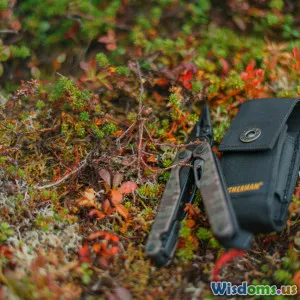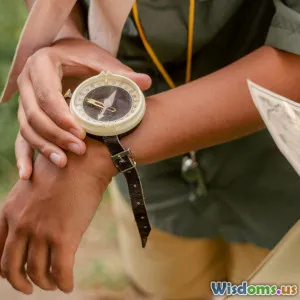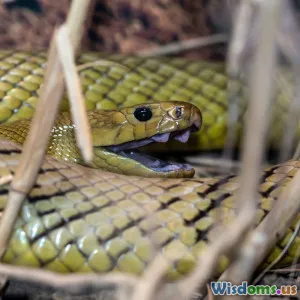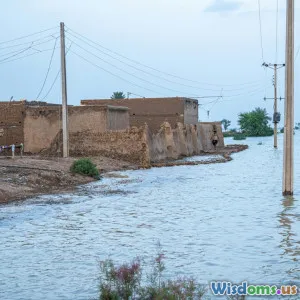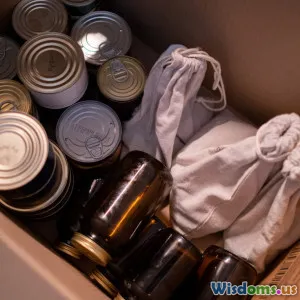
Should You Suck Out Poison An Analysis of Survival Myths
10 min read Debunking the myth of sucking out poison with scientific facts and expert insights for effective emergency response. (0 Reviews)
Should You Suck Out Poison? An Analysis of Survival Myths
In the harsh realities of accidents involving venomous snakes, insect stings, or toxic bites, ancient and modern survival advice alike often includes the dramatic recommendation: "Suck out the poison!" But how much truth underpins this urgent action? Could attempting to remove venom with your mouth do more harm than good? This article delves into the roots of this widespread survival myth, the scientific truths about poison extraction, and the best modern medical practices for responding to such emergencies.
Introduction: The Allure of Quick Fixes in Crisis
Picture this: while hiking in the wilderness, you or a companion falls victim to a snakebite. Panic sets in, and instinctively, the “hero” rushes to the wound, attempting to suck out the venom before it spreads. The scene is familiar—commonly portrayed in movies and first aid manuals of the past, this dramatized response promises a quick fix in the face of danger. However, survival relies not just on intention but on correct knowledge.
The myth that sucking poison out is a viable lifesaving treatment persists globally. Historical urgency and visceral reactions have cemented it in cultural memory. Yet, expert guidance from organizations such as the World Health Organization (WHO), the American Red Cross, and poison control centers consistently advises against this method. Why is there this stark contrast between instinct and evidence?
Origin of the Myth: Historical Context and Persistence
The concept of “sucking out poison” surprisingly predates modern medicine. It likely arose from a basic logical assumption: if poison is localized at the bite or sting site, removing it manually should reduce the amount absorbed by the body.
Historical Precedents
-
Traditional Remedies: Indigenous communities and early practitioners sometimes used their mouths or tools to extract snake venom or insect poison from skin punctures. These methods were born out of desperation and trial-and-error rather than scientific validation.
-
Military Manuals and Early First Aid: Some early 20th-century military first aid guides recommended it, although many that did so were contradicted by contemporaneous medical professionals.
Factors Ensuring the Myth’s Survival
-
Visual Dramatic Appeal: Film and TV often amplify sucking out poison, reinforcing it as a heroic act.
-
Lack of widespread public access to emergency services: In isolated environments or where healthcare is scarce, traditional methods persist longer.
-
Psychological Comfort: The act creates a feeling of actively helping, which is psychologically satisfying.
Despite this, research and medical analysis pinpoint significant risks and inefficiencies.
Dissecting the Myth: Medical Facts About Sucking Out Poison
What Happens During Venom or Poison Injection?
When a venomous bite or sting occurs, the toxin rapidly begins entering tissues and sometimes the bloodstream. The venom molecules can diffuse quickly from the wound site.
Why Sucking Out Poison Is Ineffective
-
Limited Removal Volume: Venoms penetrate tissues almost instantly. Even vigorous suction can only extract minute amounts, insufficient to alter clinical outcomes.
-
Risk of Secondary Injury: The mouth contains bacteria and pathogens; applying suction to an open wound can introduce infections such as tetanus or bacteria that may complicate injury.
-
Increased Tissue Damage: Sucking can alter tissue around the wound and potentially worsen swelling or bleeding.
-
Risk to Rescuer: If the poison is toxic to humans (for instance, diseases transmitted through blood) or corrosive, the individual trying to suck out venom risks exposure or infection.
Expert Statements
-
According to the American Heart Association, "Removal of venom by suction is not effective and the risk for infection or additional injury is significant."
-
The National Poison Control Center consistently advises against sucking or cutting around bite wounds.
Studies and Data
Limited clinical trials exist due to ethical constraints; however, retrospective analyses and clinical reports reiterate lack of benefit and possible harm from suction attempts.
For example, a 1991 study published in the Journal of Wilderness Medicine analyzing pit viper bites concluded that suction devices did not improve patient outcomes.
Safe and Effective Alternatives in Poisonous Bite Emergencies
Knowing what not to do is critical, but more important is understanding what effective actions to take.
Immediate Steps After a Bite or Sting
-
Stay Calm and Immobilize: Movement spreads venom faster; immobilize the affected limb with a splint.
-
Remove Jewelry and tight items: Swelling could complicate circulation.
-
Keep Affected Area Lowered: Slowing blood circulation reduces venom transport.
-
Call Emergency Services: Professional help should be sought immediately.
-
Clean Wound Gently: Washing with water and mild soap reduces infection risk without forcing venom deeper.
Recommended Medical Treatment
- Antivenom Administration: The single most effective treatment for venomous bites. It neutralizes circulating venom.
- Pain Management and Supportive Care: Including tetanus vaccinations, antibiotics if infection is suspected.
Devices That Claim to Remove Poison: A Caution
Some products, advertised as venom extractors or suction devices, promise to remove venom painlessly. While these devices create suction on the skin's surface, evidence suggests they have negligible benefit and should never replace professional care.
Real-World Examples of Mythful Vs. Correct Responses
Case Study 1: The Improper Use of Sucking Method
In a 2008 report from Australia, a snakebite victim was given first aid by well-intentioned bystanders who attempted manual suction. The delay in professional intervention contributed to worsened tissue necrosis and subsequent hospitalization.
Case Study 2: Effective Modern Management
Conversely, in Costa Rica, immediate immobilization and rapid transport to hospitals with antivenom supplies have drastically decreased fatality rates from snakebites—without any suction attempts.
These examples highlight how reliance on myths can be dangerous, while evidence-based protocols improve survival and recovery.
Why Do Survival Myths Persist? The Psychology Behind It
Humans naturally gravitate to straightforward solutions in crises. Survival myths like "suck out the poison" fill knowledge gaps where systems or information are lacking. This phenomenon is driven by cognitive biases, social transmission, and sometimes misinformation.
-
Confirmation Bias: People remember when the myth “worked,” ignoring cases when it failed.
-
Transmission Through Generations: Like oral traditions, these myths become embedded culturally.
Understanding these psychological drivers is key to designing better educational materials to replace myths with facts.
Conclusion: Empowering Informed Survival Decisions
The belief that you should suck out poison from a bite or sting, while deeply ingrained, is a hazardous myth without scientific backing. Attempting manual venom extraction risks infection, tissue damage, and potential poisoning of the rescuer, while offering minimal to no medical benefit.
Modern emergency responses focus on rapid immobilization, minimizing venom spread, and seeking professional medical care including antivenom. Public education and widespread access to accurate first aid information are crucial to dispel surviving myths and save lives.
Understanding the origins and dangers of such myths empowers individuals to act correctly during emergencies—turning instincts guided by knowledge, rather than folklore, into effective survival actions.
References:
- World Health Organization. (2016). Snakebite Envenoming: A Strategy for Prevention and Control.
- American Heart Association, Emergency Cardiovascular Care Guidelines.
- Dart, R. C., et al. (1991). "Ineffectiveness of suction devices for venom removal after snakebite." Journal of Wilderness Medicine.
- National Poison Control Center (n.d.). Guidelines for First Aid of Snakebites and Venomous Stings.
Further Resources:
- Centers for Disease Control and Prevention (CDC) – Venomous Snakebites
- Poison Control Centers: Find your local center
Disclaimer: This article is for educational purposes and is not a substitute for professional medical advice.
Rate the Post
User Reviews
Other posts in First Aid & Emergency Medical
Popular Posts











